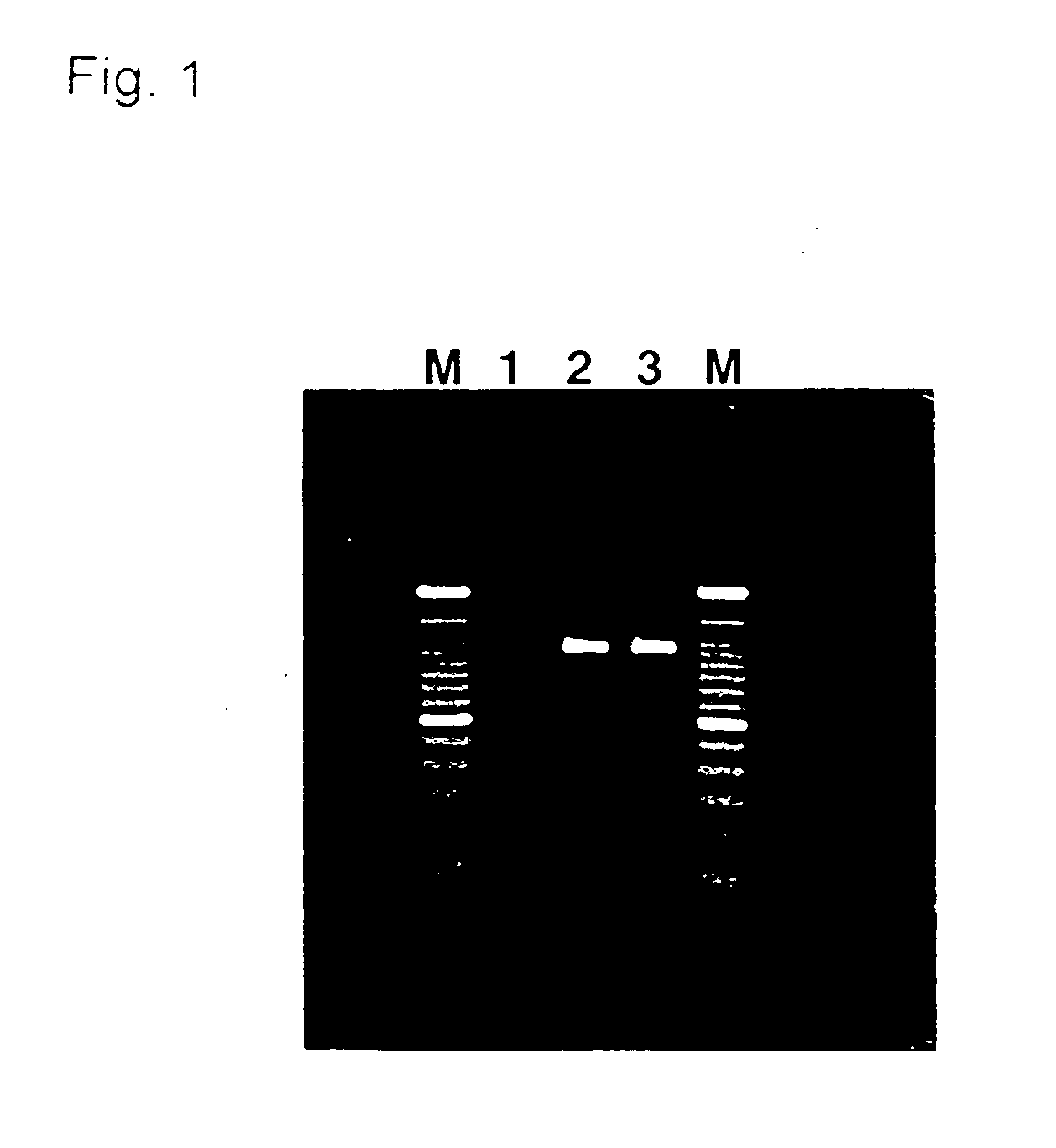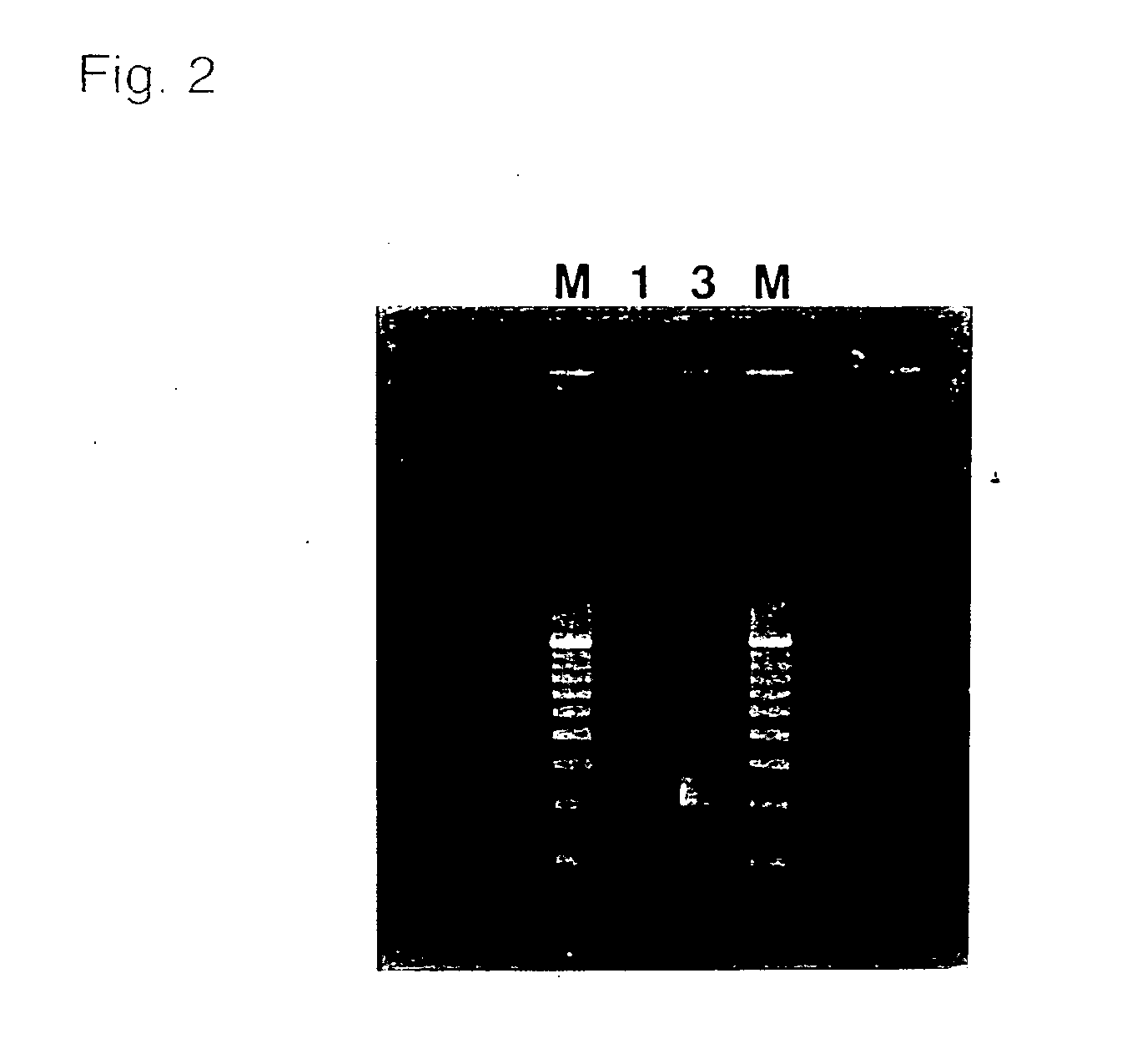Method for HLA-typing
a technology of human leukocytes and typing methods, applied in the field of typing human leukocyte antigens, can solve the problems of transferring pathogenic microorganisms, difficulty in storing and transporting biological samples, and relatively low typing accuracy
- Summary
- Abstract
- Description
- Claims
- Application Information
AI Technical Summary
Benefits of technology
Problems solved by technology
Method used
Image
Examples
example 1
[0038] Small amounts of blood (approx. 1 .mu.l) were collected from forty subjects by pricking their fingertip with a needle and were individually spotted on paper filter. An area of each spot, 2 mm in diameter, was punched out with a punch and was placed in each well of 96-well PCR plate. 20 .mu.l of a PCR mixture, the composition of which is shown below, were added to the blood-spotted filter paper in each well of the plate and the plate was sealed to prevent evaporation.
[0039] (PCR Mixture in 20 .mu.l))
1 Primers TTCTCCCCAGACGCCGAGGATGGCC (SEQ ID NO:1) 0.5 .mu.M TGTTGGTCCCAATTGTCTCCCCTC (SEQ ID NO:2) 0.5 .mu.M Ampdirect .RTM. -G / C (Shimadzu Corporation) 4 .mu.l dATP, dCTP, dGTP, dTTP 200 .mu.M each ExTaq (Takara Shuzo Co., Ltd.) 0.5 U
[0040] A PCR reaction was carried out on a thermal cycler (GeneAmp 9700, Applied Biosystems) with the following settings: preheating at 96.degree. C. for 3 min, followed by 40 cycles of 96.degree. C. for 30 sec, 63.degree. C. for 1 min and 72.degree. ...
example 2
[0047] Five subjects were asked to wash their mouths with small amounts of water. The subjects were then asked to brush their buccal surfaces with a commercial toothbrush 10 times for each cheek (20 times for both cheeks). Subsequently, the toothbrushes were each placed in a centrifuge tube containing a 10 ml 1 wt % aqueous solution of NaCl and the tubes were shaken several times to suspend the collected buccal mucosa in the solution, to obtain a sample suspension.
[0048] To a test tube containing 45 .mu.l of a PCR reaction mixture, the composition of which is shown below, a 5 .mu.l portion of the obtained sample suspension was added.
[0049] (PCR mixture in 50 .mu.l))
3 Primers Forward Primer ACCCACCCGGACTCAGAATCTCCT (SEQ ID NO: 7) 0.5 .mu.M Reverse Primer (used as a mixed primer of following two primers) GGAGGCCATCCCCGGCGACCTAT (SEQ ID NO: 8) 0.25 .mu.M GGAGGCCATCCCCGGCGATCTAT (SEQ ID NO: 9) 0.25 .mu.M Ampdirect .RTM. -G / C (Shimadzu Corporation) 10 .mu.l Amp Addition-4 (Shimadzu Corpo...
PUM
| Property | Measurement | Unit |
|---|---|---|
| diameter | aaaaa | aaaaa |
| volume | aaaaa | aaaaa |
| volume | aaaaa | aaaaa |
Abstract
Description
Claims
Application Information
 Login to View More
Login to View More - R&D
- Intellectual Property
- Life Sciences
- Materials
- Tech Scout
- Unparalleled Data Quality
- Higher Quality Content
- 60% Fewer Hallucinations
Browse by: Latest US Patents, China's latest patents, Technical Efficacy Thesaurus, Application Domain, Technology Topic, Popular Technical Reports.
© 2025 PatSnap. All rights reserved.Legal|Privacy policy|Modern Slavery Act Transparency Statement|Sitemap|About US| Contact US: help@patsnap.com


